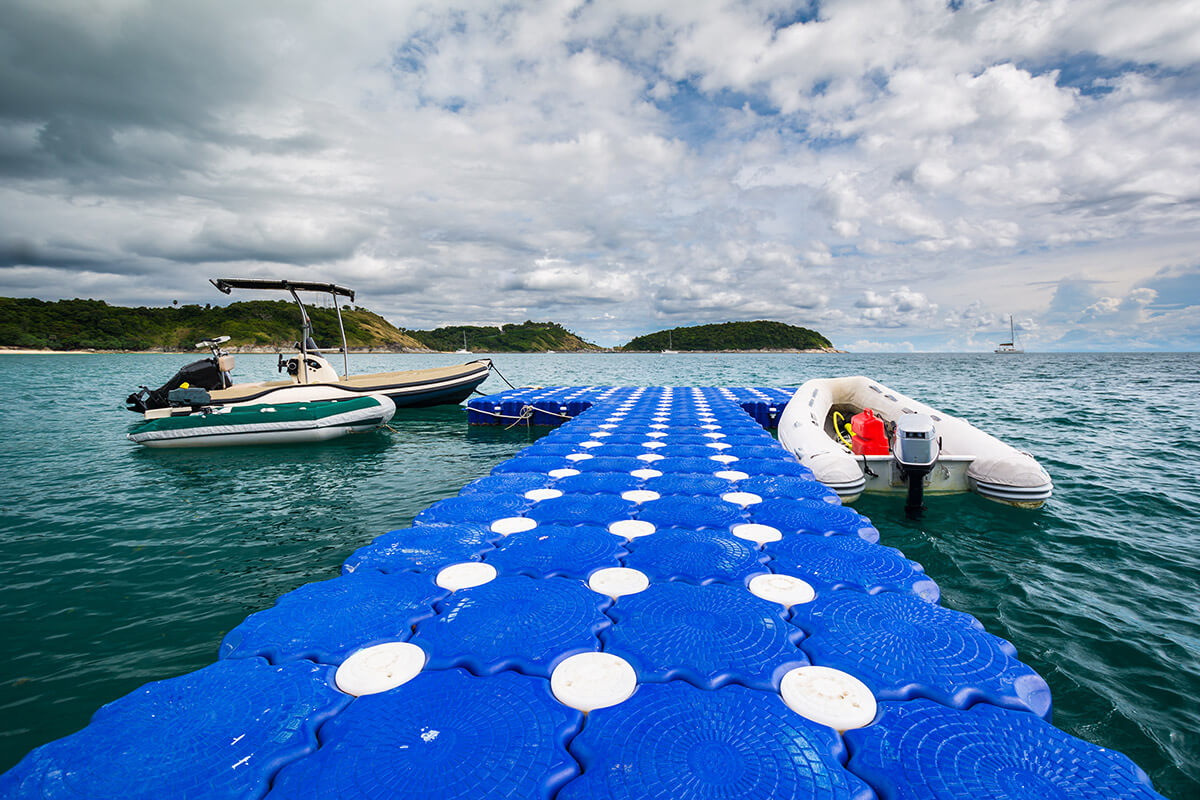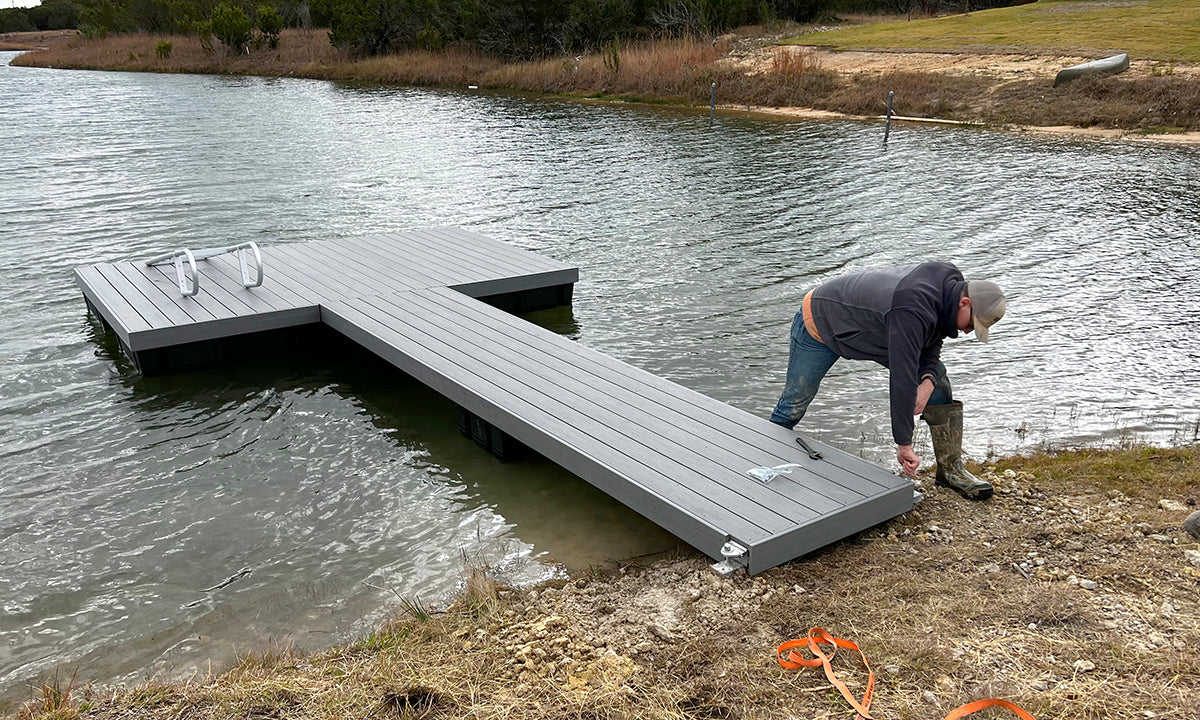Optimizing Your Outdoor Space with Specialized Floating Dock Solutions
Optimizing Your Outdoor Space with Specialized Floating Dock Solutions
Blog Article
Upgrade Your Waterfront With Sturdy Floating Docks
Updating your beachfront with sturdy floating docks can dramatically improve both performance and looks, offering a flexible remedy for numerous water tasks. These frameworks are created to adapt to changing water levels, making sure security and ease of access throughout the periods. With a series of materials readily available, including low-maintenance options and traditional timber, choosing the appropriate dock can enhance your individual design and satisfy sensible needs. However, understanding the subtleties of installation and upkeep is important for making certain longevity and efficiency. What aspects should you consider when making this investment?
Advantages of Floating Docks
Floating docks deal a wide variety of benefits that improve their allure for different maritime applications. Unlike typical set docks, floating docks rise and autumn with the tide, ensuring regular ease of access for boats and watercraft no matter of environmental conditions.
In addition, floating docks are much easier to mount and relocate, offering versatility for seasonal or short-term use. Their modular layout permits modification to fit particular demands, whether for exclusive marinas, property waterfronts, or commercial applications.
Additionally, floating docks produce marginal disturbance to the water setting, protecting regional ecosystems and minimizing the probability of disintegration. They additionally give boosted security and stability for individuals, as their resilient nature uses a much more forgiving surface than stiff structures.
Additionally, floating docks can promote a diverse series of activities, such as fishing, swimming, and leisure boating, making them a beneficial property for beachfront growth. Their adaptability and practicality make floating docks a preferred choice for a selection of maritime jobs.
Picking the Right Materials
Picking suitable materials for floating docks is essential to their long life, performance, and overall effectiveness. When choosing products, consider aspects such as environmental direct exposure, upkeep needs, and structural stability. Typical products include wood, plastic, aluminum, and composite alternatives, each offering distinct advantages and negative aspects.
Wood, while cosmetically pleasing, needs routine upkeep to avoid rot and decay. Pressure-treated wood can improve sturdiness, however it may still catch water damages gradually. Plastic floats, commonly made from high-density polyethylene, are resistant to rust and need very little upkeep, making them an appealing selection for low-maintenance applications.
Aluminum is one more practical alternative, understood for its stamina and lightweight buildings. It is resistant to corrosion and can stand up to harsh weather, although it may be more expensive than various other products. Compound materials integrate the ideal attributes of wood and plastic, offering a low-maintenance and resilient alternative that imitates the appearance of timber without the associated drawbacks.
Ultimately, the option of material need to align with the planned usage, environmental factors to consider, and spending plan restrictions, guaranteeing a useful and durable floating dock that fulfills your particular needs.
Setup Refine Introduction
The effective setup of a floating dock relies upon mindful planning and execution, making sure that it operates efficiently in its designated atmosphere. The first step involves assessing site have a peek at these guys problems, consisting of water depth, coastline functions, and dominating climate patterns, which will notify the dock layout and anchoring system.
Adhering to the website evaluation, the following phase is to prepare the floating dock elements. This includes putting together the framework, safeguarding floats, and connecting any type of essential hardware. It is crucial to ensure that all connections are waterproof and robust to hold up against marine conditions.
As soon as the dock is set up, the installment procedure begins with positioning the dock in the water. This can entail a crane or various other training equipment, especially for larger frameworks. Proper alignment is important for functionality and safety.

Upkeep Tips for Long Life
Routine upkeep is crucial for ensuring the longevity and optimum efficiency of a floating dock. To achieve this, start with regular evaluations a minimum of two times a year, focusing on the honesty of the dock's framework, including the flotation gadgets and attaching equipment. Search for indications of wear, damages, or rust, and attend to any kind of concerns quickly to stop further damage.
Cleaning up is one more essential element of maintenance. Get rid of debris, algae, and barnacles from the dock's surface area to avoid unsafe conditions and maintain aesthetic charm. Use a mild cleaning agent and a soft brush to prevent harming the dock's materials.
Additionally, make certain that the dock is correctly anchored and secured to stand up to seasonal adjustments in water degrees and climate condition. Check the anchoring system for security and make adjustments as needed.
Enhancing Your Outdoor Aesthetic
To create an aesthetically attractive outside area, integrating a drifting dock can dramatically enhance the general visual of your waterside residential or commercial property. Floating docks are not only functional however can likewise work as a striking prime focus that enhances the natural environments - dock company. Readily available in various products and styles, these docks can be customized to match your property's building design and landscape
The addition of decorative components, such as incorporated lighting or stylish railings, better boosts the dock's visual appeal. Think about making use of all-natural timber finishes, which mix flawlessly with the atmosphere, or going with modern-day products like aluminum or composite outdoor decking that supply a smooth, contemporary appearance.
Tactically placing planters or reference seating areas on or around the dock can develop welcoming spaces that motivate leisure and satisfaction of waterside views. Furthermore, including colors and appearances that integrate with your landscape will certainly create a natural aesthetic throughout your outside location.

Verdict

Upgrading your waterfront with resilient floating docks can dramatically enhance both capability and visual appeals, providing a versatile remedy for different water tasks. Unlike traditional set docks, floating docks rise and fall with the trend, ensuring constant accessibility for watercrafts and watercraft regardless of environmental problems.Choosing suitable materials for floating docks is crucial to their durability, performance, and overall efficiency.Once the dock is assembled, the installation procedure begins with placing the dock in the water.In summary, floating docks offer countless advantages, consisting of adaptability to water level changes and a selection of material alternatives.
Report this page